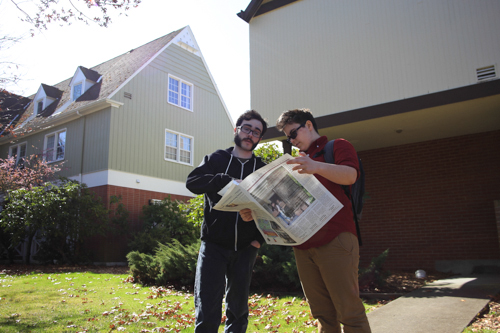Kiplinger’s Personal Finance magazine lists Puget Sound among the top 100 liberal arts colleges for affordability and education in 2014.
A rough economy has left thousands of students across the country in debt, and new students depend on this kind of information to determine the best value for their education.
“Though none of these lists really ever captures the full story of what you get out of any particular college education, this is one attempt to identify colleges balancing a quality education with affordability,” media relations manager Shirley Skeel said.
Kiplinger, a Washington, D.C.-based personal finance information company, provides for a variety of other financial interests outside of colleges. However, the schools on the Kiplinger list are of particular interest to readers.
“Many of the schools on the top 200 list have appeared in Kiplinger’s rankings in previous years, demonstrating that these schools consistently deliver good value,” the Puget Sound press release said.
Each school’s performance is thoroughly examined by the magazine. “To come up with our best values for 2014, we started with the data on nearly 600 private institutions provided by Peterson’s [a higher education information group], then added our own reporting,” the preface to the list said.
The scores for each institution are divided up into five categories: competitiveness, graduation rates, academic support, cost and financial aid and student indebtedness (post-graduation). Cost and financial aid takes up a little over 30 percent of the rating weight.
“Puget Sound…offers merit-based or need-based financial aid to more than 90 percent of its students,” the press release said. “The college…offers a high-quality education in an environment where 99 percent of tenure-line faculty members hold the highest degree in their field and more than half of students do at least one internship.”
Generous financial aid means that fewer students will have to pay the full price for admission, resulting in less debt. Those unable to provide complete tuition can have the same opportunities as students in financially stable situations.
“We reward schools with the highest percentage of need met, and we give points up to the same maximum to schools based on the percentage of students without need who receive non-need-based aid,” Kiplinger’s said.
The Kiplinger’s statistics show that 81 percent of students at Puget Sound receive aid from grants; 79 percent receive non-need-based aid; and 63 percent receive need-based aid. 58 percent of the school’s students receive student loans.
“We also recognize schools that help students avoid borrowing altogether by factoring in the percentage of students who borrow.”
“Puget Sound has been generous with student financial aid so we can assist families through difficult times, while still holding to our high academic standards and continuing to diversify the student body,” Skeel said. “There are many grants, scholarships, and loans that we customize to each student to help bring Puget Sound within their reach.”
Finances may be the focus of the magazine, but Kiplinger’s investigates more than the University’s monetary value.
“Our rankings give maximum weight to the four-year graduation rate to reward colleges that help students get undergraduate degrees on time and within budget,” Kiplinger’s said.
In economic situations that may seem hard to deal with, Puget Sound strives to show excellence in managing money to give their students an excellent and affordable education. Records show just how much the University cares about creating that kind of environment.



